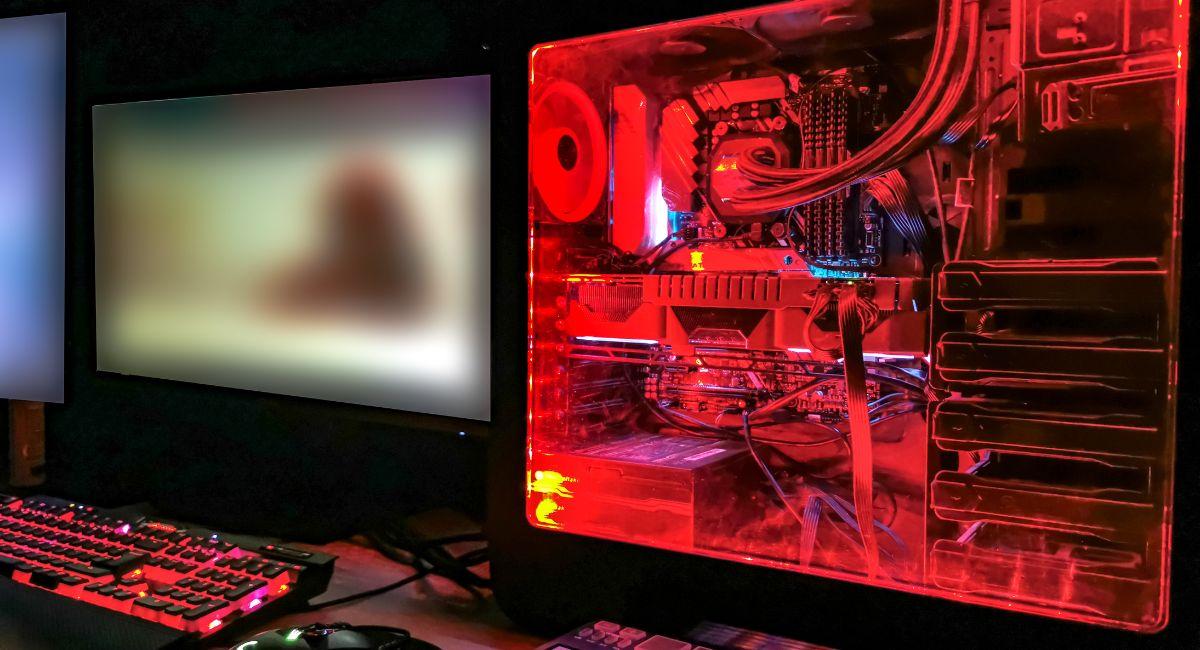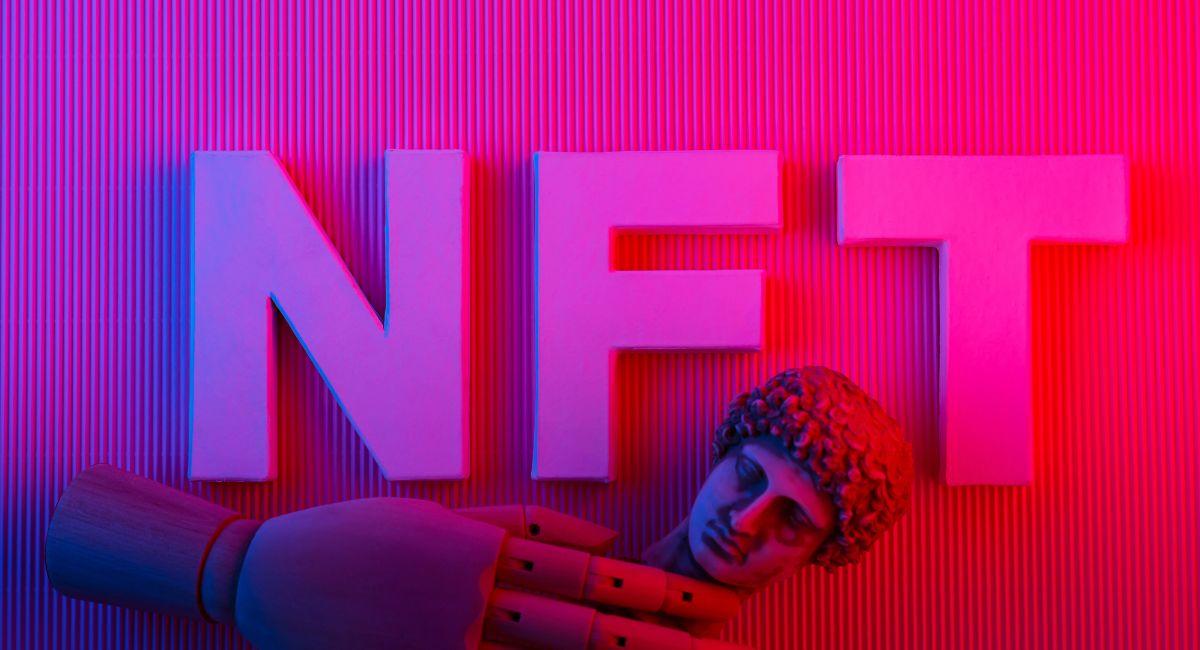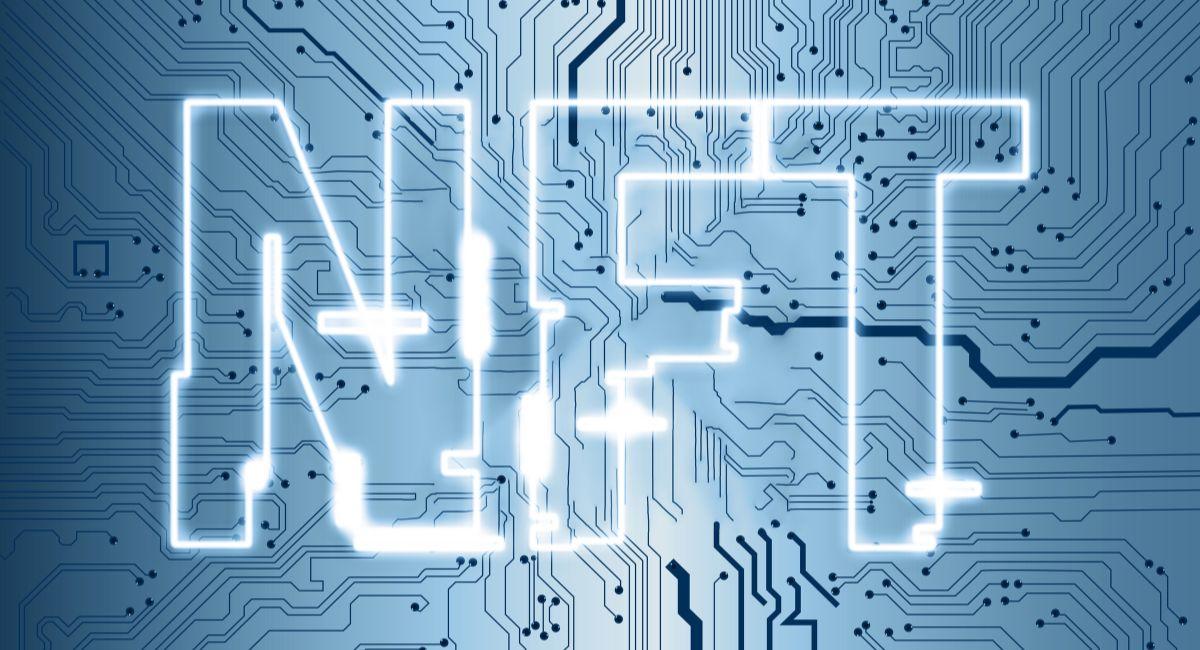Your Ultimate Guide To NFT chips And Its Top 10 Amazing Key Features

“NFT chips” could potentially refer to some form of integrated technology or cryptographic elements embedded within Non-Fungible Tokens (NFTs) to enhance their security, authenticity, or functionality. Digital assets are typically secured by blockchain technology, ensuring their uniqueness and ownership.
The term “chip” might imply a technological component or feature associated with these tokens. It’s conceivable that advancements in blockchain technology could lead to the integration of additional security measures, perhaps in the form of embedded cryptographic elements, to further protect NFTs from unauthorized duplication or tampering.
In a broader context, the term “NFT chips” could also be metaphorical, referring to a unique characteristic or feature associated with NFTs. This could include specific metadata, smart contract functionality, or other attributes that distinguish one from another.
Given the dynamic nature of the blockchain and space, new concepts and technologies continually emerge. If chips has gained significance or a specific meaning post-2022, I recommend checking the latest sources or announcements within the blockchain community for the most up-to-date and accurate information.
Importance of chips based on the general principles associated with technology:
- The introduction of new concepts like chips could signify ongoing innovation within the space. Innovations often drive interest, participation, and the overall evolution of the technology and its applications.
Also, read- What Are NFTs: Non-Fungible Tokens and Their Impact on Digital Assets
What Are NFTs?
Non-Fungible Tokens (NFTs) are unique digital assets that represent ownership or proof of authenticity of a specific item or piece of content using blockchain technology. Unlike cryptocurrencies such as Bitcoin or Ethereum, which are fungible and can be exchanged on a one-to-one basis, NFTs are non-fungible, meaning each token has distinct characteristics and cannot be exchanged on a like-for-like basis.
These are built on blockchain technology, most notably on platforms like Ethereum. The use of blockchain ensures transparency, security, and immutability in the creation, ownership, and transfer of these digital assets. Each is stored as a token on the blockchain, providing a verifiable and unalterable record of its existence.
The uniqueness is a fundamental feature, and this distinctiveness is often attributed to the metadata associated with each token. Metadata includes information about the digital or physical item represented, such as its creator, creation date, and specific details relevant to the asset. This metadata not only adds context but also contributes to its authenticity and provenance.
One of the notable applications is in the realm of digital art. Artists can tokenize their creations, allowing them to be bought, sold, and owned in the digital space. This has opened up new opportunities for digital artists to monetize their work directly, bypassing traditional intermediaries. This has enabled a paradigm shift in the art world, providing a decentralized and inclusive platform for creators and collectors.
Moreover, NFTs extend beyond the art world to encompass various digital and virtual assets. They are used to represent music, videos, virtual real estate, virtual goods in gaming, and even ownership of collectibles. The concept of ownership in the digital realm takes on a new meaning with NFTs, allowing individuals to possess unique and scarce items in the online environment.
While NFTs have brought about significant innovation, they are not without considerations. The environmental impact of certain blockchain networks, particularly those using energy-intensive proof-of-work consensus mechanisms, has raised concerns. The NFT community is exploring solutions, including the adoption of more environmentally friendly blockchain technologies.
Key features and components of NFTs include:
-
Blockchain Technology:
- These are built on blockchain platforms, commonly Ethereum but also on others like Binance Smart Chain, Flow, and more. Blockchain ensures transparency, security, and immutability, allowing users to verify ownership and authenticity of digital assets.
-
Uniqueness and Indivisibility:
- Each distinct, carrying unique metadata that sets it apart from any other token. This uniqueness is a fundamental aspect of NFTs, providing a digital certificate of authenticity.
-
Ownership and Digital Scarcity:
- NFTs represent ownership of digital or physical items, including digital art, music, virtual real estate, collectibles, and more. The scarcity of certain NFTs can contribute to their perceived value.
-
Smart Contracts:
- NFTs often utilize smart contracts, self-executing contracts with coded rules. Smart contracts enable various functionalities such as automated royalty payments, content updates, or specific conditions for transfers.
-
Metadata:
- Metadata associated with an NFT includes details about the asset, such as its creator, creation date, and any additional information relevant to the digital or physical item it represents.
-
Digital Art and Collectibles:
- NFTs have gained significant traction in the art world, providing a new way for digital artists to monetize their work and allowing collectors to own unique digital pieces. Digital collectibles, such as trading cards or virtual goods, are also popular within the NFT space.
-
Marketplaces:
- NFTs are bought, sold, and traded on various online marketplaces dedicated to digital assets. Examples include OpenSea, Rarible, and Mintable. These marketplaces facilitate the discovery and exchange of NFTs.
-
Environmental Considerations:
- The environmental impact of certain blockchain networks, particularly those using proof-of-work consensus mechanisms like Ethereum, has raised concerns. Some blockchains, like those using proof-of-stake, aim to address these environmental considerations.
-
Celebrity and Brand Engagement:
- Celebrities, musicians, and brands have embraced as a way to engage with fans and monetize their digital presence. NFTs offer a direct connection between creators and their audience.
-
Evolution and Innovation:
-
- The NFT space is dynamic, with ongoing innovation and experimentation. New use cases, technological advancements, and collaborations continue to shape the landscape.
🚨New #MinoNFT drop! 🚨
— Robinos Sports Prediction Platform | Mino NFT 🟣 (@RobinosPredict) January 23, 2024
We’re pumped to add 51 new players to the Mino roster right in time for the #ChampionsLeague knockout stage 💪
Find out how you can score a #freemint (😱) for one of the blue chips of the @Telos_NFTs scene: https://t.co/ovJuSvBOMu@HelloTelos #Telos -
- The introduction of new concepts like chips could signify ongoing innovation within the space. Innovations often drive interest, participation, and the overall evolution of the technology and its applications.
Also, read- What Are NFTs: Non-Fungible Tokens and Their Impact on Digital Assets
What Are NFTs?
Non-Fungible Tokens (NFTs) are unique digital assets that represent ownership or proof of authenticity of a specific item or piece of content using blockchain technology. Unlike cryptocurrencies such as Bitcoin or Ethereum, which are fungible and can be exchanged on a one-to-one basis, NFTs are non-fungible, meaning each token has distinct characteristics and cannot be exchanged on a like-for-like basis.
These are built on blockchain technology, most notably on platforms like Ethereum. The use of blockchain ensures transparency, security, and immutability in the creation, ownership, and transfer of these digital assets. Each is stored as a token on the blockchain, providing a verifiable and unalterable record of its existence.
The uniqueness is a fundamental feature, and this distinctiveness is often attributed to the metadata associated with each token. Metadata includes information about the digital or physical item represented, such as its creator, creation date, and specific details relevant to the asset. This metadata not only adds context but also contributes to its authenticity and provenance.
One of the notable applications is in the realm of digital art. Artists can tokenize their creations, allowing them to be bought, sold, and owned in the digital space. This has opened up new opportunities for digital artists to monetize their work directly, bypassing traditional intermediaries. This has enabled a paradigm shift in the art world, providing a decentralized and inclusive platform for creators and collectors.
Moreover, NFTs extend beyond the art world to encompass various digital and virtual assets. They are used to represent music, videos, virtual real estate, virtual goods in gaming, and even ownership of collectibles. The concept of ownership in the digital realm takes on a new meaning with NFTs, allowing individuals to possess unique and scarce items in the online environment.
While NFTs have brought about significant innovation, they are not without considerations. The environmental impact of certain blockchain networks, particularly those using energy-intensive proof-of-work consensus mechanisms, has raised concerns. The NFT community is exploring solutions, including the adoption of more environmentally friendly blockchain technologies.
Key features and components of NFTs include:
-
Blockchain Technology:
- These are built on blockchain platforms, commonly Ethereum but also on others like Binance Smart Chain, Flow, and more. Blockchain ensures transparency, security, and immutability, allowing users to verify ownership and authenticity of digital assets.
-
Uniqueness and Indivisibility:
- Each distinct, carrying unique metadata that sets it apart from any other token. This uniqueness is a fundamental aspect of NFTs, providing a digital certificate of authenticity.
-
Ownership and Digital Scarcity:
- NFTs represent ownership of digital or physical items, including digital art, music, virtual real estate, collectibles, and more. The scarcity of certain NFTs can contribute to their perceived value.
-
Smart Contracts:
- NFTs often utilize smart contracts, self-executing contracts with coded rules. Smart contracts enable various functionalities such as automated royalty payments, content updates, or specific conditions for transfers.
-
Metadata:
- Metadata associated with an NFT includes details about the asset, such as its creator, creation date, and any additional information relevant to the digital or physical item it represents.
-
Digital Art and Collectibles:
- NFTs have gained significant traction in the art world, providing a new way for digital artists to monetize their work and allowing collectors to own unique digital pieces. Digital collectibles, such as trading cards or virtual goods, are also popular within the NFT space.
-
Marketplaces:
- NFTs are bought, sold, and traded on various online marketplaces dedicated to digital assets. Examples include OpenSea, Rarible, and Mintable. These marketplaces facilitate the discovery and exchange of NFTs.
-
Environmental Considerations:
- The environmental impact of certain blockchain networks, particularly those using proof-of-work consensus mechanisms like Ethereum, has raised concerns. Some blockchains, like those using proof-of-stake, aim to address these environmental considerations.
-
Celebrity and Brand Engagement:
- Celebrities, musicians, and brands have embraced as a way to engage with fans and monetize their digital presence. NFTs offer a direct connection between creators and their audience.
-
Evolution and Innovation:
-
- The NFT space is dynamic, with ongoing innovation and experimentation. New use cases, technological advancements, and collaborations continue to shape the landscape.
🚨New #MinoNFT drop! 🚨
— Robinos Sports Prediction Platform | Mino NFT 🟣 (@RobinosPredict) January 23, 2024
We’re pumped to add 51 new players to the Mino roster right in time for the #ChampionsLeague knockout stage 💪
Find out how you can score a #freemint (😱) for one of the blue chips of the @Telos_NFTs scene: https://t.co/ovJuSvBOMu@HelloTelos #Telos -
- Enhanced Security:
- If chips involve embedded cryptographic elements or advanced security features, they could contribute to heightened security. This might involve protection against counterfeiting, tampering, or unauthorized duplication.
- Authentication and Trust:
- The presence of advanced technological components within could enhance their authenticity, making it easier for users to verify the legitimacy of digital assets. This could be crucial in building trust within the market.
- Protection Against Fraud:
- Smart Contract Integration:
- The term “chips” might also refer to integrated smart contracts or additional functionalities. This could automate certain processes, such as royalty distribution or content updates, adding utility and convenience for both creators and buyers.
- Unique Features for Differentiation:
- If NFT chips introduce unique features or characteristics to digital assets, it could provide a means for collectors to differentiate between various NFTs. This uniqueness might add value to the assets and contribute to a more diverse and interesting ecosystem.
- Innovation in NFT Technology:
- The introduction of new concepts like chips could signify ongoing innovation within the space. Innovations often drive interest, participation, and the overall evolution of the technology and its applications.
Also, read- What Are NFTs: Non-Fungible Tokens and Their Impact on Digital Assets
What Are NFTs?
Non-Fungible Tokens (NFTs) are unique digital assets that represent ownership or proof of authenticity of a specific item or piece of content using blockchain technology. Unlike cryptocurrencies such as Bitcoin or Ethereum, which are fungible and can be exchanged on a one-to-one basis, NFTs are non-fungible, meaning each token has distinct characteristics and cannot be exchanged on a like-for-like basis.
These are built on blockchain technology, most notably on platforms like Ethereum. The use of blockchain ensures transparency, security, and immutability in the creation, ownership, and transfer of these digital assets. Each is stored as a token on the blockchain, providing a verifiable and unalterable record of its existence.
The uniqueness is a fundamental feature, and this distinctiveness is often attributed to the metadata associated with each token. Metadata includes information about the digital or physical item represented, such as its creator, creation date, and specific details relevant to the asset. This metadata not only adds context but also contributes to its authenticity and provenance.
One of the notable applications is in the realm of digital art. Artists can tokenize their creations, allowing them to be bought, sold, and owned in the digital space. This has opened up new opportunities for digital artists to monetize their work directly, bypassing traditional intermediaries. This has enabled a paradigm shift in the art world, providing a decentralized and inclusive platform for creators and collectors.
Moreover, NFTs extend beyond the art world to encompass various digital and virtual assets. They are used to represent music, videos, virtual real estate, virtual goods in gaming, and even ownership of collectibles. The concept of ownership in the digital realm takes on a new meaning with NFTs, allowing individuals to possess unique and scarce items in the online environment.
While NFTs have brought about significant innovation, they are not without considerations. The environmental impact of certain blockchain networks, particularly those using energy-intensive proof-of-work consensus mechanisms, has raised concerns. The NFT community is exploring solutions, including the adoption of more environmentally friendly blockchain technologies.
Key features and components of NFTs include:
-
Blockchain Technology:
- These are built on blockchain platforms, commonly Ethereum but also on others like Binance Smart Chain, Flow, and more. Blockchain ensures transparency, security, and immutability, allowing users to verify ownership and authenticity of digital assets.
-
Uniqueness and Indivisibility:
- Each distinct, carrying unique metadata that sets it apart from any other token. This uniqueness is a fundamental aspect of NFTs, providing a digital certificate of authenticity.
-
Ownership and Digital Scarcity:
- NFTs represent ownership of digital or physical items, including digital art, music, virtual real estate, collectibles, and more. The scarcity of certain NFTs can contribute to their perceived value.
-
Smart Contracts:
- NFTs often utilize smart contracts, self-executing contracts with coded rules. Smart contracts enable various functionalities such as automated royalty payments, content updates, or specific conditions for transfers.
-
Metadata:
- Metadata associated with an NFT includes details about the asset, such as its creator, creation date, and any additional information relevant to the digital or physical item it represents.
-
Digital Art and Collectibles:
- NFTs have gained significant traction in the art world, providing a new way for digital artists to monetize their work and allowing collectors to own unique digital pieces. Digital collectibles, such as trading cards or virtual goods, are also popular within the NFT space.
-
Marketplaces:
- NFTs are bought, sold, and traded on various online marketplaces dedicated to digital assets. Examples include OpenSea, Rarible, and Mintable. These marketplaces facilitate the discovery and exchange of NFTs.
-
Environmental Considerations:
- The environmental impact of certain blockchain networks, particularly those using proof-of-work consensus mechanisms like Ethereum, has raised concerns. Some blockchains, like those using proof-of-stake, aim to address these environmental considerations.
-
Celebrity and Brand Engagement:
- Celebrities, musicians, and brands have embraced as a way to engage with fans and monetize their digital presence. NFTs offer a direct connection between creators and their audience.
-
Evolution and Innovation:
-
- The NFT space is dynamic, with ongoing innovation and experimentation. New use cases, technological advancements, and collaborations continue to shape the landscape.
🚨New #MinoNFT drop! 🚨
— Robinos Sports Prediction Platform | Mino NFT 🟣 (@RobinosPredict) January 23, 2024
We’re pumped to add 51 new players to the Mino roster right in time for the #ChampionsLeague knockout stage 💪
Find out how you can score a #freemint (😱) for one of the blue chips of the @Telos_NFTs scene: https://t.co/ovJuSvBOMu@HelloTelos #Telos -

































































